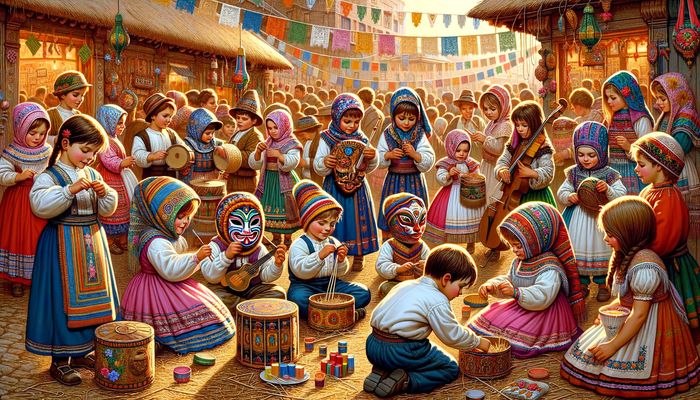Art has been an essential part of human history, serving as a means of expression, communication, and cultural preservation. Among the many forms of art, traditional art holds a unique place, reflecting the heritage, beliefs, and values of different societies. Whether it is the intricate patterns of Islamic calligraphy, the bold strokes of Chinese ink painting, or the colorful motifs of Native American pottery, traditional art connects generations and keeps ancient artistic practices alive.
In this exploration of traditional art, we will delve into its significance, various forms, and the way it continues to inspire modern creativity.
The Significance of Traditional Art
Traditional art is more than just aesthetic expression—it carries historical, spiritual, and social importance. It is deeply tied to the identity of communities and often tells stories of their struggles, triumphs, and daily lives. Many traditional art forms have been passed down through generations, serving as a bridge between the past and the present.
1. A Reflection of Cultural Identity
Traditional art represents the soul of a culture. Each pattern, color, and symbol used in artistic creations often holds specific meanings. For instance, in African tribal masks, different shapes and decorations signify various spiritual beliefs and social statuses. Similarly, in Indian Rangoli art, the use of vibrant colors and symmetrical patterns symbolizes prosperity and good fortune.
2. Storytelling Through Art
Long before the invention of writing, people used art to document their lives and histories. Cave paintings from prehistoric times serve as an early example of storytelling through visual representation. In more recent times, tapestries, murals, and scroll paintings have been used to depict religious stories, mythologies, and historical events.
3. Spiritual and Religious Importance
Traditional art is often deeply rooted in spirituality. Many religious traditions use art to express devotion, illustrate sacred texts, and honor deities. For example, Tibetan Buddhist mandalas are intricate, symmetrical patterns that represent the universe and are used in meditation practices. Similarly, Byzantine mosaics in churches depict religious figures and scenes with incredible detail and craftsmanship.
Diverse Forms of Traditional Art
Traditional art encompasses a wide range of mediums and techniques, each unique to the culture from which it originates. Below are some of the most well-known forms of traditional art from around the world.
1. Painting and Drawing
Many cultures have developed distinct painting styles over centuries.
- Chinese Ink Painting: Using delicate brushstrokes, this style focuses on harmony with nature and simplicity.
- European Frescoes: Found in churches and palaces, frescoes tell stories through large, colorful murals.
- Indigenous Australian Dot Painting: This style uses thousands of tiny dots to create patterns that represent landscapes and ancestral stories.
2. Sculpture and Carving
- African Wood Carvings: Used for masks and figurines that often have spiritual significance.
- Greek Marble Sculptures: Masterpieces like the Venus de Milo showcase the skill and beauty of classical art.
- Native American Totem Poles: Tall wooden structures carved with symbolic figures to represent family history and legends.
3. Textile and Weaving Arts
Weaving and textile arts are among the most practical yet beautiful forms of traditional art.
- Peruvian Andean Textiles: These textiles feature vibrant patterns and colors, often used for clothing and blankets.
- Japanese Kimono Designs: Hand-painted or embroidered, kimonos showcase detailed motifs that reflect nature and seasonal changes.
4. Pottery and Ceramics
Pottery has been an essential part of daily life and artistic expression across cultures.
- Greek Pottery: Often decorated with mythological scenes and geometric patterns.
- Chinese Porcelain: Famous for its delicate blue-and-white designs.
- Mexican Talavera Tiles: Brightly colored, hand-painted tiles used for decorative and architectural purposes.
Traditional Art in the Modern World
Even in today’s digital age, traditional art continues to thrive, often blending with contemporary styles. Many artists incorporate traditional techniques into modern art, creating a fusion of old and new.
1. Preservation and Revival
Museums, cultural organizations, and governments support artisans through funding, exhibitions, and educational programs. Digital archives now allow ancient artworks to be studied and appreciated by people all over the world.
2. Influence on Contemporary Art
Many modern artists draw inspiration from traditional art. For example, fashion designers incorporate traditional textile patterns into their designs, and street artists use motifs from indigenous art to create murals that honor cultural heritage.
3. Handmade Art in a Mass-Produced World
People increasingly seek out authentic, handmade artworks, appreciating the skill and dedication that goes into each piece.
Conclusion
Exploring The Fascinating World Of Traditional Art is a timeless treasure that connects us to history, culture, and human creativity. It tells stories, preserves heritage, and continues to inspire generations of artists and art lovers alike. As we explore and appreciate traditional art, we ensure that these rich cultural expressions are not forgotten but celebrated and passed on to the future.

